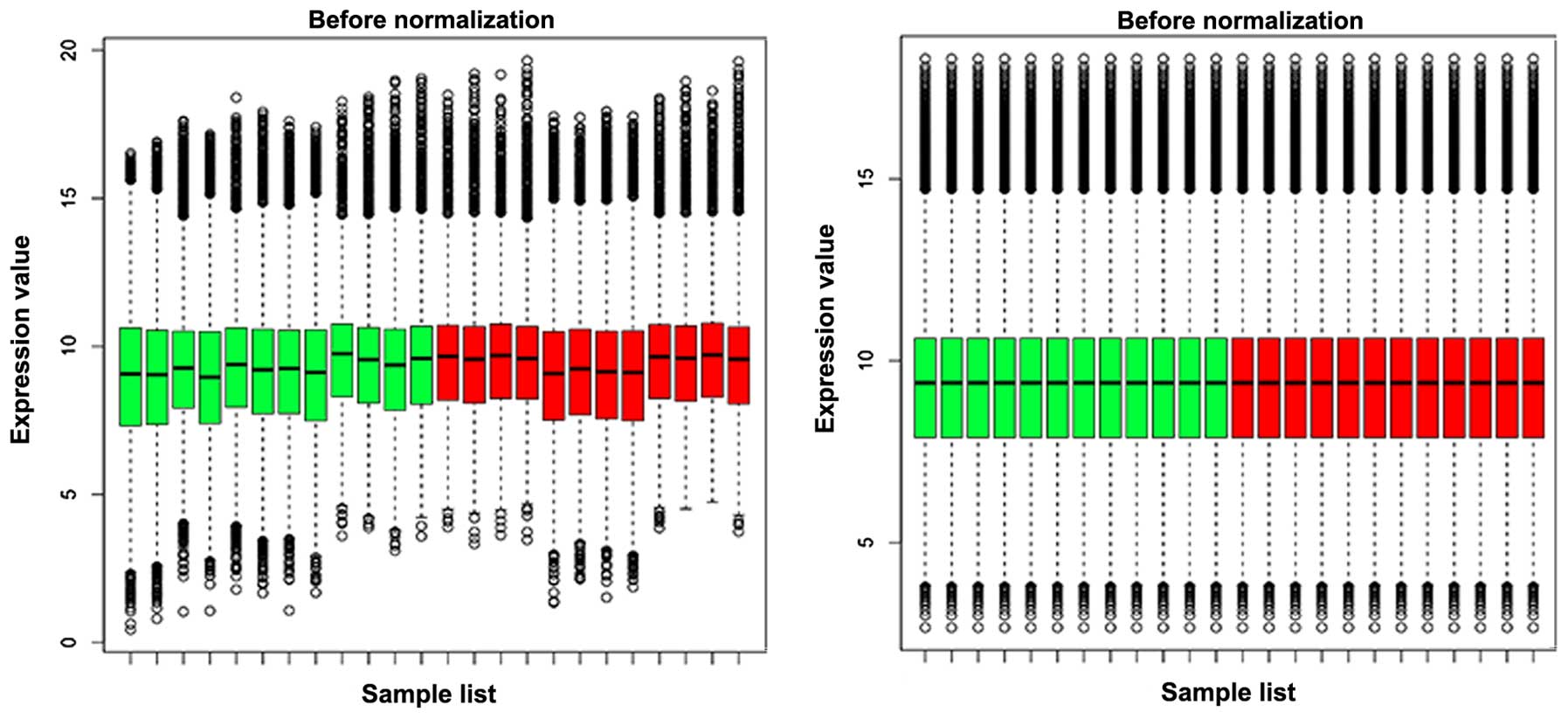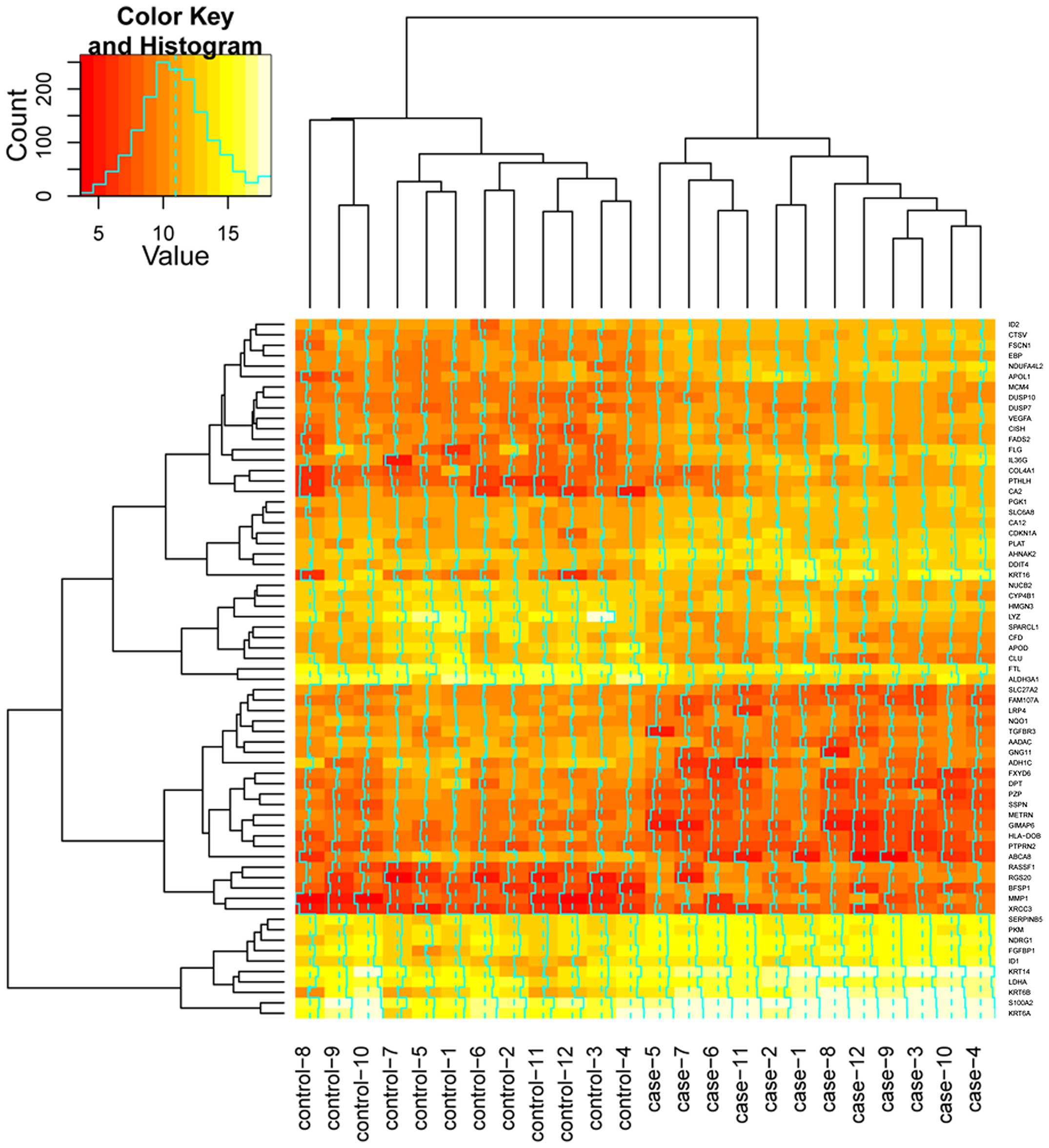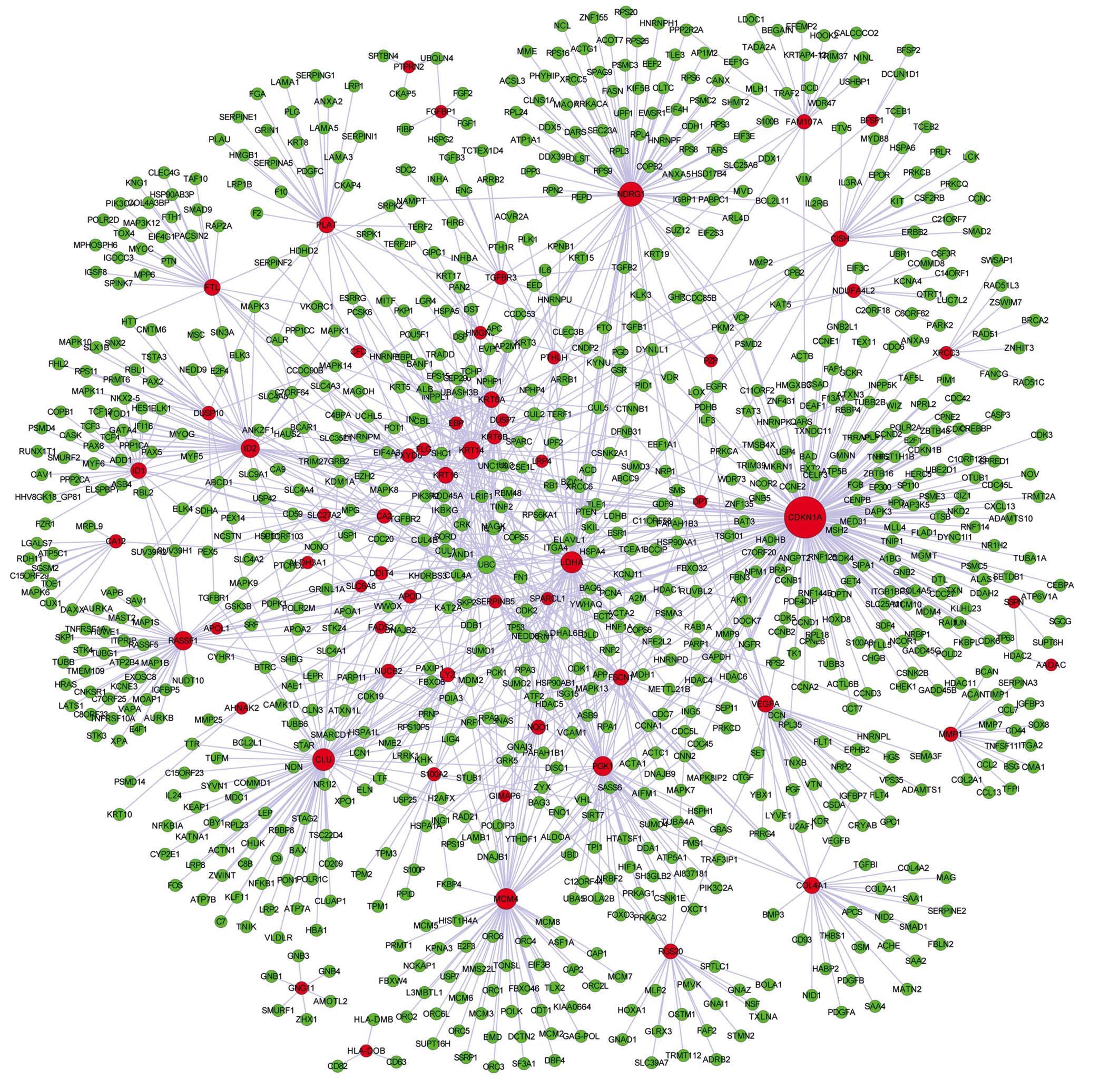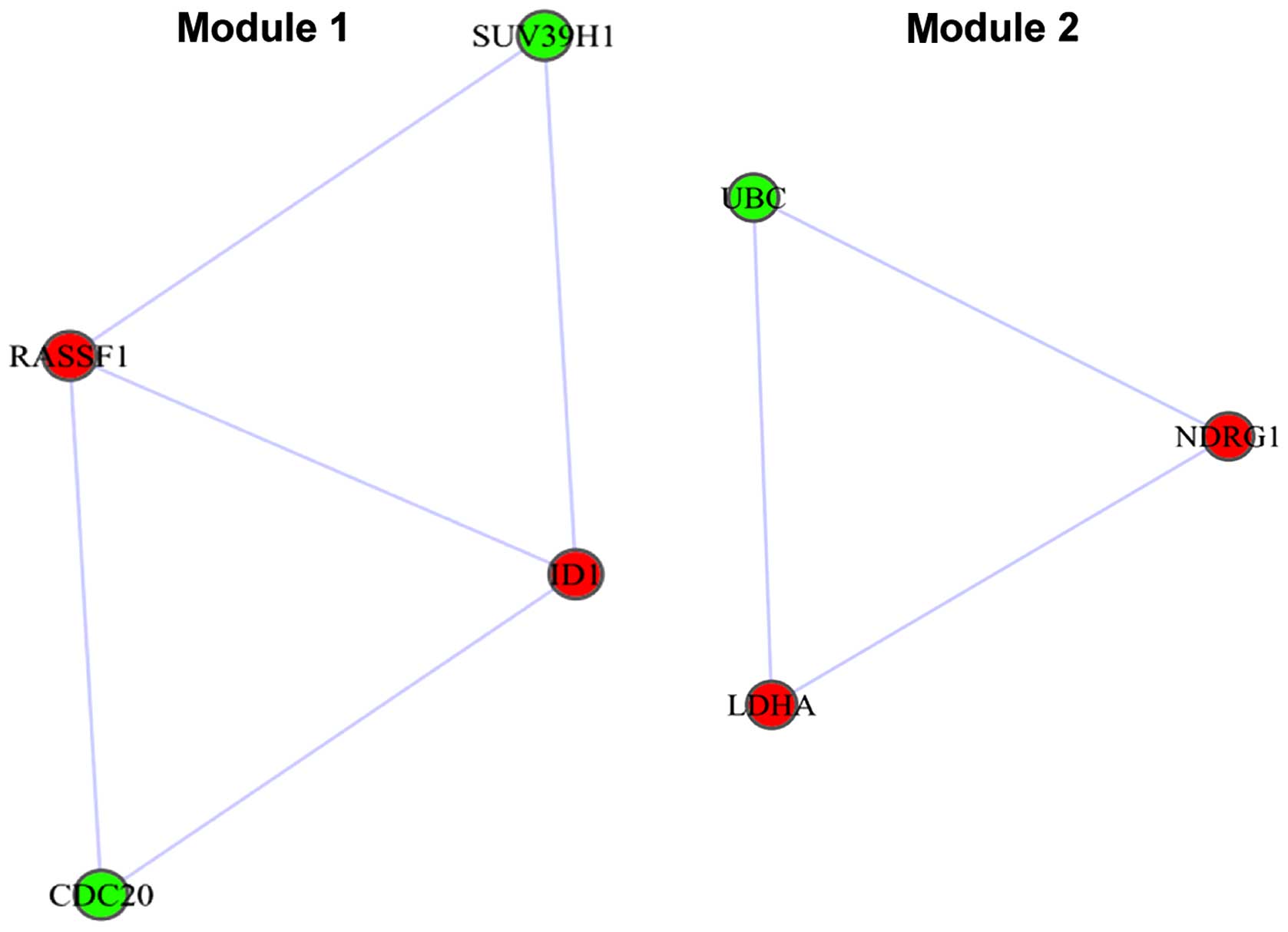|
1
|
Licitra L, Bernier J, Grandi C, Locati L,
Merlano M, Gatta G and Lefebvre JL: Cancer of the larynx. Crit Rev
Oncol Hematol. 47:65–80. 2003. View Article : Google Scholar : PubMed/NCBI
|
|
2
|
Chen H, Zhou L, Dou T, Wan G, Tang H and
Tian J: BMI1′S maintenance of the proliferative capacity of
laryngeal cancer stem cells. Head Neck. 33:1115–1125. 2011.
View Article : Google Scholar : PubMed/NCBI
|
|
3
|
Ferlito A, Rogers SN, Shaha AR, Bradley PJ
and Rinaldo A: Quality of life in head and neck cancer. Acta
Otolaryngol. 123:5–7. 2003. View Article : Google Scholar : PubMed/NCBI
|
|
4
|
Torrente MC, Rodrigo JP, Haigentz M Jr,
Dikkers FG, Rinaldo A, Takes RP, Olofsson J and Ferlito A: Human
papillomavirus infections in laryngeal cancer. Head Neck.
33:581–586. 2011. View Article : Google Scholar : PubMed/NCBI
|
|
5
|
Hobbs CG and Birchall MA: Human
papillomavirus infection in the etiology of laryngeal carcinoma.
Curr Opin Otolaryngol Head Neck Surg. 12:88–92. 2004. View Article : Google Scholar : PubMed/NCBI
|
|
6
|
Ma LJ, Li W, Zhang X, Huang DH, Zhang H,
Xiao JY and Tian YQ: Differential gene expression profiling of
laryngeal squamous cell carcinoma by laser capture microdissection
and complementary DNA microarrays. Arch Med Res. 40:114–123. 2009.
View Article : Google Scholar : PubMed/NCBI
|
|
7
|
Nakanishi H, Taccioli C, Palatini J,
Fernandez-Cymering C, Cui R, Kim T, Volinia S and Croce C: Loss of
miR-125b-1 contributes to head and neck cancer development by
dysregulating TACSTD2 and MAPK pathway. Oncogene. 33:702–712. 2014.
View Article : Google Scholar : PubMed/NCBI
|
|
8
|
Järvinen A, Autio R, Haapa-Paananen S,
Wolf M, Saarela M, Grénman R, Leivo I, Kallioniemi O, Mäkitie AA
and Monni O: Identification of target genes in laryngeal squamous
cell carcinoma by high-resolution copy number and gene expression
microarray analyses. Oncogene. 25:6997–7008. 2006. View Article : Google Scholar : PubMed/NCBI
|
|
9
|
Fountzilas E, Markou K, Vlachtsis K,
Nikolaou A, Arapantoni-Dadioti P, Ntoula E, Tassopoulos G, Bobos M,
Konstantinopoulos P, Fountzilas G and Spentzos D: Identification
and validation of gene expression models that predict clinical
outcome in patients with early-stage laryngeal cancer. Ann Oncol.
23:2146–2153. 2012. View Article : Google Scholar : PubMed/NCBI
|
|
10
|
Colombo J, Fachel AA, De Freitas Calmon M,
Cury PM, Fukuyama EE, Tajara EH, Cordeiro JA, Verjovski-Almeida S,
Reis EM and Rahal P: Gene expression profiling reveals molecular
marker candidates of laryngeal squamous cell carcinoma. Oncol Rep.
21:649–663. 2009.PubMed/NCBI
|
|
11
|
Oblak A and Jerala R: Toll-like receptor 4
activation in cancer progression and therapy. Clin Dev Immunol.
2011:609–579. 2011. View Article : Google Scholar
|
|
12
|
DeVoti JA, Rosenthal DW, Wu R, Abramson
AL, Steinberg BM and Bonagura VR: Immune dysregulation and
tumor-associated gene changes in recurrent respiratory
papillomatosis: A paired microarray analysis. Mol Med. 14:608–617.
2008. View Article : Google Scholar : PubMed/NCBI
|
|
13
|
Parker HS, Leek JT, Favorov AV, Considine
M, Xia X, Chavan S, Chung CH and Fertig EJ: Preserving biological
heterogeneity with a permuted surrogate variable analysis for
genomics batch correction. Bioinformatics. 30:2757–2763. 2014.
View Article : Google Scholar : PubMed/NCBI
|
|
14
|
Ihaka R and Gentleman R: R: A language for
data analysis and graphics. J Comput Graph Stat. 5:299–314. 1996.
View Article : Google Scholar
|
|
15
|
Yuan K, Liang W and Zhang J: A
comprehensive analysis of differentially expressed genes and
pathways in abdominal aortic aneurysm. Mol Med Rep. 12:2707–2714.
2015.PubMed/NCBI
|
|
16
|
Cui X and Churchill GA: Statistical tests
for differential expression in cDNA microarray experiments. Genome
Biol. 4:2102003. View Article : Google Scholar : PubMed/NCBI
|
|
17
|
Diboun I, Wernisch L, Orengo CA and
Koltzenburg M: Microarray analysis after RNA amplification can
detect pronounced differences in gene expression using limma. BMC
Genomics. 7:2522006. View Article : Google Scholar : PubMed/NCBI
|
|
18
|
Bland JM and Altman DG: Multiple
significance tests: The Bonferroni method. BMJ. 310:1701995.
View Article : Google Scholar : PubMed/NCBI
|
|
19
|
Belda-Ferre P, Alcaraz LD, Cabrera-Rubio
R, et al: The oral metagenome in health and disease. ISME J.
6:46–56. 2012. View Article : Google Scholar : PubMed/NCBI
|
|
20
|
da Huang W, Sherman BT and Lempicki RA:
Systematic and integrative analysis of large gene lists using DAVID
bioinformatics resources. Nat Protoc. 4:44–57. 2009. View Article : Google Scholar : PubMed/NCBI
|
|
21
|
Ashburner M, Ball CA, Blake JA, Botstein
D, Butler H, Cherry JM, Davis AP, Dolinski K, Dwight SS, Eppig JT,
et al: Gene ontology: Tool for the unification of biology. The Gene
Ontology Consortium. Nat Genet. 25:25–29. 2000. View Article : Google Scholar : PubMed/NCBI
|
|
22
|
Kanehisa M and Goto S: KEGG: Kyoto
encyclopedia of genes and genomes. Nucleic Acids Res. 28:27–30.
2000. View Article : Google Scholar : PubMed/NCBI
|
|
23
|
Köhler S, Bauer S, Horn D and Robinson PN:
Walking the interactome for prioritization of candidate disease
genes. Am J Hum Genet. 82:949–958. 2008. View Article : Google Scholar : PubMed/NCBI
|
|
24
|
Prasad Keshava TS, Goel R, Kandasamy K,
Keerthikumar S, Kumar S, Mathivanan S, Telikicherla D, Raju R,
Shafreen B, Venugopal A, et al: Human protein reference
database-2009 update. Nucleic Acids Res. 37(Database Issue):
D767–D772. 2009. View Article : Google Scholar : PubMed/NCBI
|
|
25
|
Stark C, Breitkreutz BJ, Chatr-Aryamontri
A, Boucher L, Oughtred R, Livstone MS, Nixon J, Van Auken K, Wang
X, Shi X, et al: The BioGRID interaction database: 2011 update.
Nucleic Acids Res. 39(Database Issue): D698–D704. 2011. View Article : Google Scholar : PubMed/NCBI
|
|
26
|
Bandettini WP, Kellman P, Mancini C,
Booker OJ, Vasu S, Leung SW, Wilson JR, Shanbhag SM, Chen MY and
Arai AE: MultiContrast delayed enhancement (MCODE) improves
detection of subendocardial myocardial infarction by late
gadolinium enhancement cardiovascular magnetic resonance: A
clinical validation study. J Cardiovasc Magn Reson. 14:832012.
View Article : Google Scholar : PubMed/NCBI
|
|
27
|
Li C and Li MC: Package
‘iSubpathwayMiner’. 2013.
|
|
28
|
Chen X, Xu J, Huang B, Li J, Wu X, Ma L,
Jia X, Bian X, Tan F, Liu L, et al: A sub-pathway-based approach
for identifying drug response principal network. Bioinformatics.
27:649–654. 2011. View Article : Google Scholar : PubMed/NCBI
|
|
29
|
Ayaz L, Görür A, Yaroğlu HY, Özcan C and
Tamer L: Differential expression of microRNAs in plasma of patients
with laryngeal squamous cell carcinoma: Potential early-detection
markers for laryngeal squamous cell carcinoma. J Cancer Res Clin
Oncol. 139:1499–1506. 2013. View Article : Google Scholar : PubMed/NCBI
|
|
30
|
Tommasi S, Dammann R, Jin SG, Zhang XF,
Avruch J and Pfeifer GP: RASSF3 and NORE1: Identification and
cloning of two human homologues of the putative tumor suppressor
gene RASSF1. Oncogene. 21:2713–2720. 2002. View Article : Google Scholar : PubMed/NCBI
|
|
31
|
Agathanggelou A, Cooper WN and Latif F:
Role of the Ras-association domain family 1 tumor suppressor gene
in human cancers. Cancer Res. 65:3497–3508. 2005. View Article : Google Scholar : PubMed/NCBI
|
|
32
|
Sun W, Liu Y, Glazer CA, Shao C, Bhan S,
Demokan S, Zhao M, Rudek MA, Ha PK and Califano JA: TKTL1 is
activated by promoter hypomethylation and contributes to head and
neck squamous cell carcinoma carcinogenesis through increased
aerobic glycolysis and HIF1alpha stabilization. Clin Cancer Res.
16:857–866. 2010. View Article : Google Scholar : PubMed/NCBI
|
|
33
|
Sakurai D, Yamaguchi A, Tsuchiya N,
Yamamoto K and Tokunaga K: Expression of ID family genes in the
synovia from patients with rheumatoid arthritis. Biochem Biophys
Res Commun. 284:436–442. 2001. View Article : Google Scholar : PubMed/NCBI
|
|
34
|
Coskunpinar E, Oltulu YM, Orhan KS,
Tiryakioglu NO, Kanliada D and Akbas F: Identification of a
differential expression signature associated with tumorigenesis and
metastasis of laryngeal carcinoma. Gene. 534:183–188. 2014.
View Article : Google Scholar : PubMed/NCBI
|
|
35
|
Wang X, Di K, Zhang X, Han HY, Wong YC,
Leung SC and Ling MT: Id-1 promotes chromosomal instability through
modification of APC/C activity during mitosis in response to
microtubule disruption. Oncogene. 27:4456–4466. 2008. View Article : Google Scholar : PubMed/NCBI
|
|
36
|
Bi X, Lin Q, Foo TW, Joshi S, You T, Shen
HM, Ong CN, Cheah PY, Eu KW and Hew CL: Proteomic analysis of
colorectal cancer reveals alterations in metabolic pathways:
Mechanism of tumorigenesis. Mol Cell Proteomics. 5:1119–1130. 2006.
View Article : Google Scholar : PubMed/NCBI
|
|
37
|
Gatenby RA and Gillies RJ: Why do cancers
have high aerobic glycolysis? Nat Rev Cancer. 4:891–899. 2004.
View Article : Google Scholar : PubMed/NCBI
|
|
38
|
Valentini G, Maggi M and Pey AL: Protein
stability, folding and misfolding in human PGK1 deficiency.
Biomolecules. 3:1030–1052. 2013. View Article : Google Scholar : PubMed/NCBI
|
|
39
|
Ning QY, Wu JZ, Zang N, Liang J, Hu YL and
Mo ZN: Key pathways involved in prostate cancer based on gene set
enrichment analysis and meta analysis. Genet Mol Res. 10:3856–3887.
2011. View Article : Google Scholar : PubMed/NCBI
|
|
40
|
Vander Heiden MG: Targeting cancer
metabolism: A therapeutic window opens. Nat Rev Drug Discov.
10:671–684. 2011. View Article : Google Scholar : PubMed/NCBI
|
|
41
|
Tennant DA, Durán RV and Gottlieb E:
Targeting metabolic transformation for cancer therapy. Nat Rev
Cancer. 10:267–277. 2010. View Article : Google Scholar : PubMed/NCBI
|
|
42
|
Lindskog S: Structure and mechanism of
carbonic anhydrase. Pharmacol Ther. 74:1–20. 1997. View Article : Google Scholar : PubMed/NCBI
|
|
43
|
Dasgupta S, Tripathi PK, Qin H,
Bhattacharya-Chatterjee M, Valentino J and Chatterjee SK:
Identification of molecular targets for immunotherapy of patients
with head and neck squamous cell carcinoma. Oral Oncol. 42:306–316.
2006. View Article : Google Scholar : PubMed/NCBI
|
|
44
|
Parkkila S, Rajaniemi H, Parkkila AK,
Kivela J, Waheed A, Pastorekova S, Pastorek J and Sly WS: Carbonic
anhydrase inhibitor suppresses invasion of renal cancer cells in
vitro. Proc Natl Acad Sci USA. 97:2220–2224. 2000. View Article : Google Scholar : PubMed/NCBI
|
|
45
|
Lascorz J, Hemminki K and Försti A:
Systematic enrichment analysis of gene expression profiling studies
identifies consensus pathways implicated in colorectal cancer
development. J Carcinog. 10:72011. View Article : Google Scholar : PubMed/NCBI
|


















